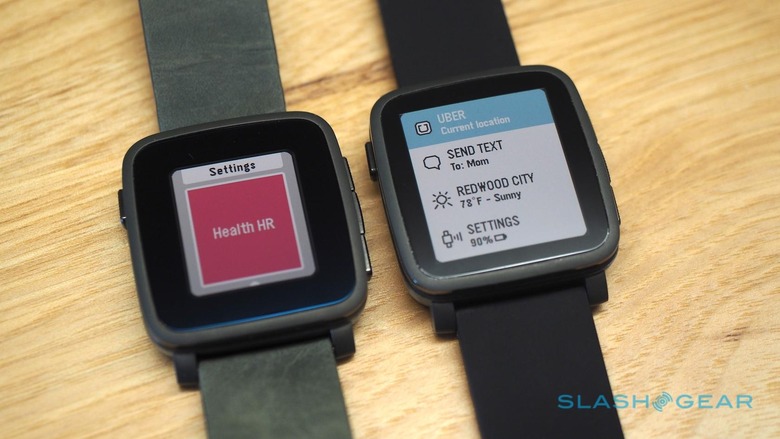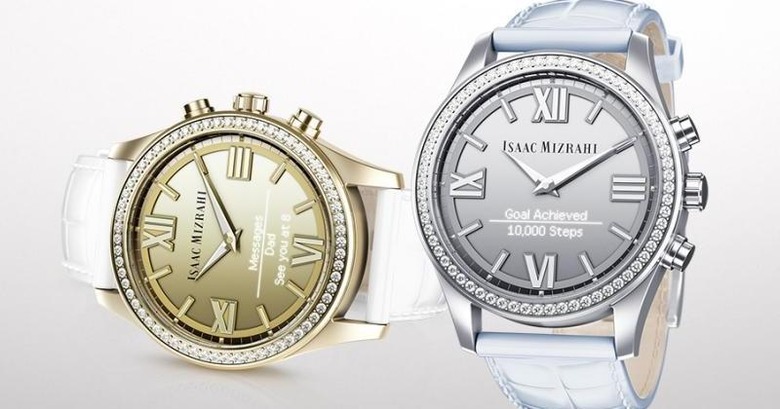What smartwatches are still getting wrong
It's been more than three years since the first modern commercial smartwatches, the Pebble and the Sony SmartWatch, hit the market and this wearable device category still hasn't taken the industry by storm. In the meantime, less powerful and less featured smart fitness bands are flooding the market and is giving some well-deserved and long overdue attention to healthier lifestyles (at least hopefully). These two device categories sometimes share some features, like notifications and activity tracking. Sometimes they even share in price tags. And yet smarwatches aren't regarded with the same esteem and market share as their health-centric cousins. The issue might not just be because smartwatches answer the problems wrong. They might also be answering the wrong problems.
The Wrong Problem
What are smartwatches and what are they for anyway? Technically speaking, we can probably define smartwatches as a wearable device that connects to smartphones (or directly to a cellular network) in order to receive and send data regarding activity tracking, notifications, and responses to those notifications and has a sufficiently large display to make that convenient. Oh, and they tell time too. The problem with that rather basic definition is that it also applies to many fitness trackers with screens of their own, whether or not they resemble smartwatches. So lets qualify the definition by saying how smartwatch apps can exhibit more sophisticated behavior and features comparable to their smartphone counterparts.
But what are they for? Aside from the geekiness (which is a good thing) and fanciness of wearing a hi-tech device on your wrist, smartwatches were supposed to save us from having our faces stuck to our smartphone screens. They were meant to stop us from having to whip out our phones, especially in circumstances where doing so would not only be rude but sometimes even dangerous. It's a noble goal, true enough, but it doesn't strike at the root of the real problem. The reason why most of us have our heads glued to our smartphones and why we always want to pull them out of our pockets or bags is because of information overload and the acquired urge to respond to those right then and there. Smartwatches haven't really done away with those. It just relocated the problem from our pockets to our wrists and have even made it more convenient to get lost in the sea of notifications and actions.

You still get hammered by notifications. Sure, you can turn those off, but the process is opt out rather than opt in. Each app you install will most likely have its notification enabled by default and you'll have to dig through settings to disable them. Fitness trackers, on the other hand, are usually limited, either technically or by design, to the most important types of notifications, calls and messages. Of course, a smartwatch that only does those will be indistinguishable from a fitness tracker, so manufacturers and platform makers had to throw in the kitchen sink. But that's just the tip of the iceberg.
The Wrong Answers
Aside from not exactly dealing with the root cause of our problems with smartphones, smartwatches also don't offer the right solutions even to the problems it tries to solve. Here are just some of the examples.
The Voice
Voice-controlled personal assistants are all the rage these days, so naturally smartwatches need to have some of that, too, right? We've also seen how it works on the big screen or on TV, so it's gotta be cool and useful, right? In some cases, yes, they would be, and it would be easier to bring up your wrist near your face and ask your question than to have to reach out for your smartphone. But when you think about it, the times when you have to use your smartwatch because you can't use your smartphone are more often than not also the times when you speaking out loud is also impractical, awkward, or inefficient. That is true for meetings and open public spaces where both social norms and ambient noise make it near impossible to use voice control. You'll be better off manually navigating on your smartwatch, which brings us to the next wrong answer.
Long and winded taps
Smartwatches are limited by their tiny screens. Whether you tap on them or use buttons, the amount of information and actions that can be presented is limited by the screen size. As such, what would normally take a tap or two on a smartphone becomes a multi-tap process on smartwatches. Tap, swipe, tap, speak, tap. After a while it becomes tedious and users will eventually just reach for their smartphones if possible. It is quite telling when the convenient solution becomes more inconvenient than the problem.

Much ado about nothing
It's a great thing that smartwatch platforms are, more or less, open platforms. They allow developers to push the boundaries of the technology, giving birth to some crazy idea that may turn out to be useful in the long run. They also give birth to insane ideas and implementation that, thankfully, are not taken that seriously. Great power, great responsibility, etc. Many smartwatch apps, even those from seasoned developers and brands, tend to cram as many things inside the app to either make them interesting or put them on par with the features on the smartphone. That leads to rather convoluted interfaces or bloated apps. The one sliver hope is that, at this point in time, everyone's new at this area of app development. Hopefully as smartwatch platforms mature and get more stable, best practices will start to surface and smartwatch apps can shed some, if not most, of their weight in the process.
The Real Problem
In the end, it's not exactly a question of how many apps you have installed or what those apps can do but on how much time you spend on your smartwatch. No one spends more than a minute staring at their fitness band's display, and even less on a regular, non-smart watch. The problem that smartwatches should be solving is the information overload coming from our smartphones and their effects on our habits and lifestyles. And the only real way to do that is to make sure you actually spend less time on your smartwatch and hopefully more time being present in the real world and not back on your smartphone.
Possible Solutions
The best way to really do that would be to reduce apps to their most basic function, or very few functions and to make sure that an action can be done with as few taps as possible. Tap, or tap tap, and you're done! Having to swipe your way through menu choices only lengthens the time you spend focused on your smartwatch. Not exactly an ideal fix.
So how can we make the smartwatch better to save the smartwatch? Here are some potential answers.
Single actions
This is admittedly inspired by Pebble's latest babies, the Pebble 2 and the Pebble Core. Or to be even more specific, the upcoming Actions interface, which, ironically, will have Pebble owners spending less time on their Pebbles. The idea is that each app has a single core action associated with it and can be triggered by a single button or tap after selecting from a list. A phone or messaging app could make a call or send a messagge to a pre-defined single contact, the latter with a canned message. An Uber action would hail a ride to your current location. A Domino's app could order your favorite pizza to be delivered to your doorstep. The apps themselves can offer more functionality and options, of course, but these actions represent the very core of those apps and the most common use cases they have.

This best works, however, with a bit of intelligence on the side. In Uber's case, for example, if you hail it from your workplace at 5:00 p.m., it could presume that you're going home and fill in the destination for you automatically. If you're replying to an e-mail, it the app might know your what your usual answer is to certain types of messages so that it can send the canned reply with a single tap or push of a button. When rejecting a call, the smartwatch could also send a more personal message telling the caller why you're unable to take the call.
So in order for this Actions-based solution to work, you'll need to make the smartwatch really smart. It is, after all, a smartwatch.
Not a smartwatch
Technology and manufacturing has come to a point where a watch need not be a smartwatch to be smart. For some, a completely digital touch screen display would be their preferred form, but others with a penchant for classy analog timepieces can now also enjoy the smartness. Some have successfully hidden a full display underneath the watch face, while other dedicated only a section for dynamic digital content. Electronics and sensors can be inside the watch itself or in the strap or buckle. Either way, such a kind of smart watch has the side effect of truly forcing the platform and app developers to condense features and information down to the essentials. You are unlikely to be bothered by non-stop Tweets or read them on this kind of watch. Paired with the Actions interface idea, even an analog watch can get you a ride home from work.

It's not a solution that will fit everyone, of course, especially those who do prefer to have very dynamic, vibrant, and completely digital displays on their wrists. But at least those that don't won't feel too left out.
Smartphone on your wrist
Yes, you read that right. If you're going to throw in a kitchen sink, you might as well have a kitchen, right? This is eventually where the future might be headed anyway. Flexible, foldable, and rollable smartphones are slowly but surely coming. And when they do, they will practically replace those smartwatches on your wrist. Or they'll be on the other wrist while you still wear your traditional timepiece. You will no longer have to debate whether to take out your smartphone or use your smartwatch because they are one and the same. You also have a bigger display to view. Of course, that also means you'll be inundated by the same flood of notifications now. Hopefully by then, users and developers have learned how to tame those wild, unruly notifications and have gotten used to designing simpler, "wearable" versions of apps.
Wrap-up
More than four years in the making, smartwatches still aren't a household name or a common sight, unlike fitness bands and brands like Fitbit, Jawbone, and others. The Apple Watch is popular because of its brand and its social status, but not because you see it on a wrist everywhere. It might be a bitter pill to swallow for smartwatch fans and tech lovers, but smartwatches as they are now have mostly failed to capture the market, though they have undoubtedly captured the imagination.
Maybe it's time for device makers and platform developers to rethink what a smartwatch really is and what it is for. It doesn't have to give up being a multi-purpose device and become like a fitness tracker to become single-purpose. I just needs to become simple-purpose to save us from our smartphones and ourselves.
